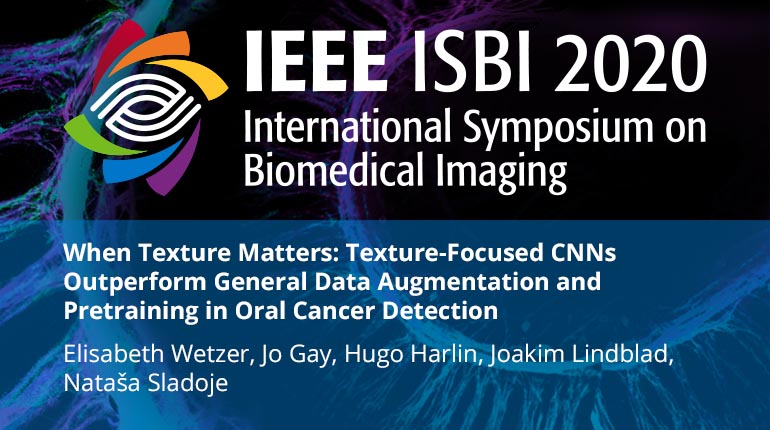
Already purchased this program?
Login to View
This video program is a part of the Premium package:
When Texture Matters: Texture-Focused CNNs Outperform General Data Augmentation and Pretraining in Oral Cancer Detection
- IEEE MemberUS $11.00
- Society MemberUS $0.00
- IEEE Student MemberUS $11.00
- Non-IEEE MemberUS $15.00
When Texture Matters: Texture-Focused CNNs Outperform General Data Augmentation and Pretraining in Oral Cancer Detection
Early detection is essential to reduce cancer mortality. Oral cancer could be subject to screening programs (similar as for cervical cancer) by collecting Pap smear samples at any dentist visit. However, manual analysis of the resulting massive amount of data is prohibitively costly. Convolutional neural networks (CNNs) have shown promising results in discriminating between cancerous and non-cancerous cells, which allows efficient automated processing of cancer screening data. We investigate different CNN architectures which explicitly aim to utilize texture information in cytological cancer classification, motivated by studies showing that chromatin texture is among the most important discriminative features for that purpose. Results show that CNN classifiers guided by Local Binary Patterns (LBPs) achieve better performance than general purpose CNNs, even when different levels of general data augmentation, as well as pretraining, are considered.
Early detection is essential to reduce cancer mortality. Oral cancer could be subject to screening programs (similar as for cervical cancer) by collecting Pap smear samples at any dentist visit. However, manual analysis of the resulting massive amount of data is prohibitively costly. Convolutional neural networks (CNNs) have shown promising results in discriminating between cancerous and non-cancerous cells, which allows efficient automated processing of cancer screening data. We investigate different CNN architectures which explicitly aim to utilize texture information in cytological cancer classification, motivated by studies showing that chromatin texture is among the most important discriminative features for that purpose. Results show that CNN classifiers guided by Local Binary Patterns (LBPs) achieve better performance than general purpose CNNs, even when different levels of general data augmentation, as well as pretraining, are considered.
 Cart
Cart Create Account
Create Account Sign In
Sign In





